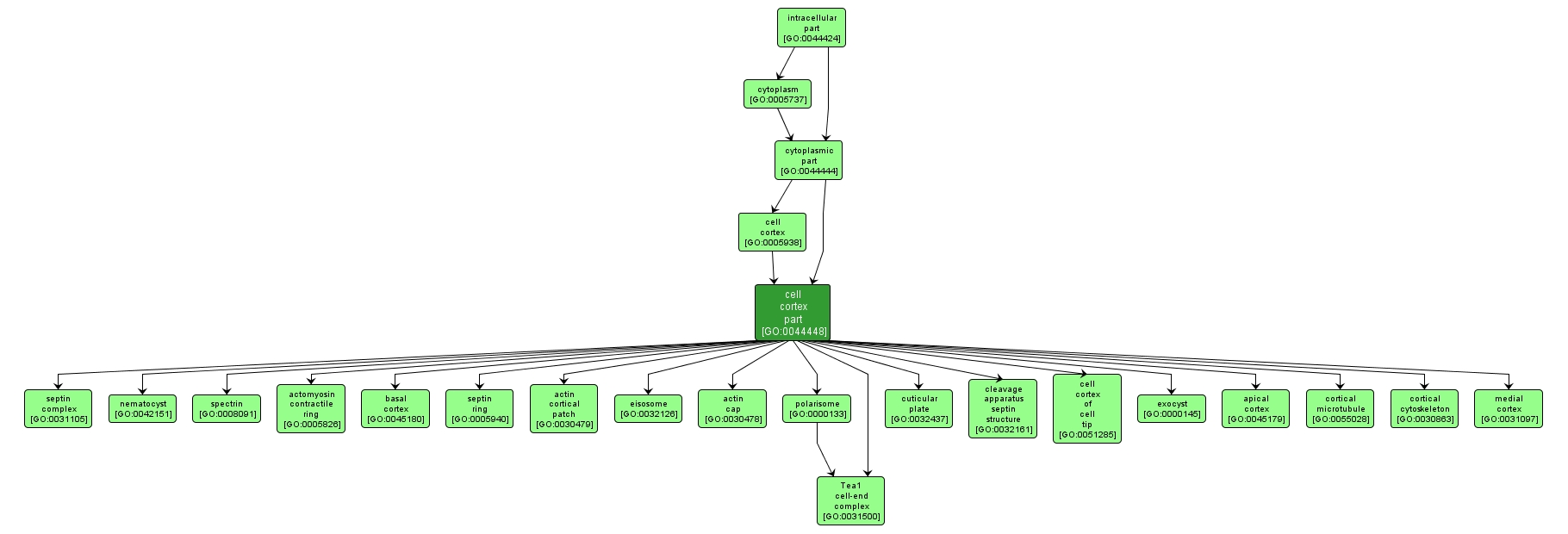GO TERM SUMMARY
|
| Name: |
cell cortex part |
| Acc: |
GO:0044448 |
| Aspect: |
Cellular Component |
| Desc: |
Any constituent part of the cell cortex, the region of a cell that lies just beneath the plasma membrane and often, but not always, contains a network of actin filaments and associated proteins. |
|

|
INTERACTIVE GO GRAPH
|














